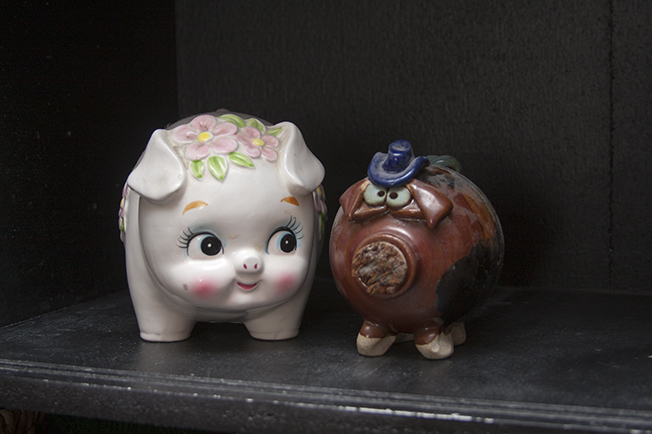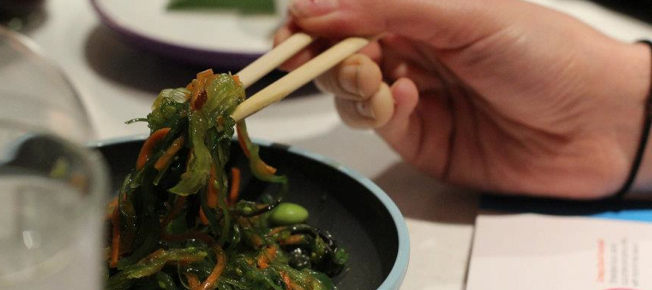After vacationing in Japan, visiting New York, and moving in with my boyfriend, all within three months, I had a lot of debt and needed to have a plan to get rid of it. I have a decent job that sort of allows me to live comfortably, but the reality is that I needed to budget my spending and hold myself to it. Budgeting my way out of debt and into better savings sucks. It really does, but it’s part of being a responsible adult who maybe wants to buy a house, or get married, or take another big vacation abroad.

Photo by Meaghan Morrison
Let’s take a look at how I try to set up my budget, which is generally applicable for a young working professional living in the major Bay Area. Please note that the cost of living can be scaled down (or up) depending on where you live.
How Much Money You Make
For salaried workers, this is pretty simple. How much do you get paid? How often do you get paid? Multiply accordingly to figure out about how much you make each month. For example, let’s say my annual income is $40,000–after taxes. It comes out to about $1,200 per paycheck twice a month. We’ll work with a baseline of $2,400 dollars each month, subtracting as we count our expenses.
Cash Flow: $2,400
How Much You Have to Spend
Car payments, rent, and insurance are some typical costs. These are required for not losing your car, your home, and your health (or maintaining any of the above), and as such, these are your priority payments each month. In addition, since you have to buy gas for your car, you should estimate the average cost of a tank and the number of times you fill up in a month. I generally go to a gas station about three times a month, give or take a week. There’s not really an opportunity for cost savings here, barring trading down your current car and moving back and forth.
Cash Flow: $2,400
Rent: -$700
Car Payment: -$306
Gasoline: -$120
Car / Renter’s Insurance: -$110
Cash Flow after Necessities: $1,164
How Much You Have for Food
Barring rent, food is where I spend the majority of my money each month. Cutting back from having sushi two to three times a week sucked, but I had to devise a plan for saving money where I usually spend the most.
First, I accounted for breakfast and work lunches. I normally don’t eat breakfast, but sometimes I do get coffee. Paying $4 three times a week for a coffee and snack comes to $12 per week for breakfast. For lunch, the cafeteria at my work tends to charge about $6 per meal, but I want a little breathing room to eat out with my co-workers once a week at about $15. A $6 cafeteria lunch four times a week, plus $15 for eating out once a week, comes to $39 per week for lunch. Next, we should account for dinners, desserts, and other snacks you would normally eat at home. I try to eat something of moderate size and of moderate price from the grocery store most nights of the week. This usually comes out to about $10 a day, sometimes serving for two or more.
To account for eating out, I let the cost savings roll over, and try to not binge on alcohol or appetizers. In order to calculate how much you’d spend each month, multiply your weekly costs for breakfast, lunch, and dinner by about 4.3 (the average number of weeks in a month). It isn’t an exact number, but it generally works out to be fairly accurate (and then I round up to the nearest whole dollar).
This part of the budget varies greatly from person to person, as some people care more about what they’re eating, how often they’re eating it, and if they can stand leftovers. I for one don’t mind leftovers, but hate monotony in the variety of my overall meals, so I spend a little more on some meals for bigger tastier foods.
Cash Flow after Necessities: $1,164
Breakfast: -$51
Lunch: -$168
Dinner: -$300
Cash Flow after Food: $645
How Much You Have for Fun
Shit gets tricky here. You have a finite amount of money left this month. You could spend it on drinking, a new pair of shoes, or a coffee table. I like all of these things, but my savings are more important to me. If you don’t have any, what happens when you run into trouble? I’m a bit proud and don’t really want to ask my mom and dad for help, so I put a small, but decent chunk directly into savings.
After that, it’s sort of like juggling. You can revise how much you spend each month on entertainment, such as movies or small trips. Or maybe, you want to spend more money on material things, and go shopping more often. These budgets are flexible because you still have money left over. I recommend that you put anything remaining from your cash flow into savings.
Cash Flow after Food: $645
Savings: -$200
Entertainment: -$120
Shopping: -$200
Cash Flow after Fun: $125
Getting Out of Debt
Above, there’s the basic outline of a budget, but you can see that at the end, there’s not a lot to pay back toward existing bills. Here’s where you look at all the things you’re spending money on and figure out where you can afford to cut back. For example, you don’t really need to spend $200 a month on shopping for new things. This could be cut down to $50 for new games or some new makeup, bringing your debt repayment funds up to $275. Furthermore, not everyone is like me and spends a lot of money on food. Some folks I know spend less than $200 a month on food, and that could be you too! Saving money to pay debt sucks, but it needs to be done if you want to be a financially responsible adult. Just learn to cut where it doesn’t hurt as bad.
Note that if you have long-standing credit card debt, you should try to pay it off first before putting a lot into savings. Your savings doesn’t accrue interest, while owing money to credit card companies costs you more in the long run. You should also aim to pay off your credit cards every month, making the bills in the long term much more manageable.
Making Everything Easier
Finally, work out your budget in Microsoft Excel or Google Spreadsheets: it’s an excellent way to have a copy that you can manipulate and track your progress. Alternatively, you can use a site such as Mint to have them track your spending. Such websites can pull records from your credit cards, bank statements, and other bills to better show much you’ve been spending, and usually they have great ways to analyze your spending or track your goals. You can use these to see where you’ve been putting all your hard-earned cash, so you can decide where you need to cut back.
Good luck with the budgets and the savings!

